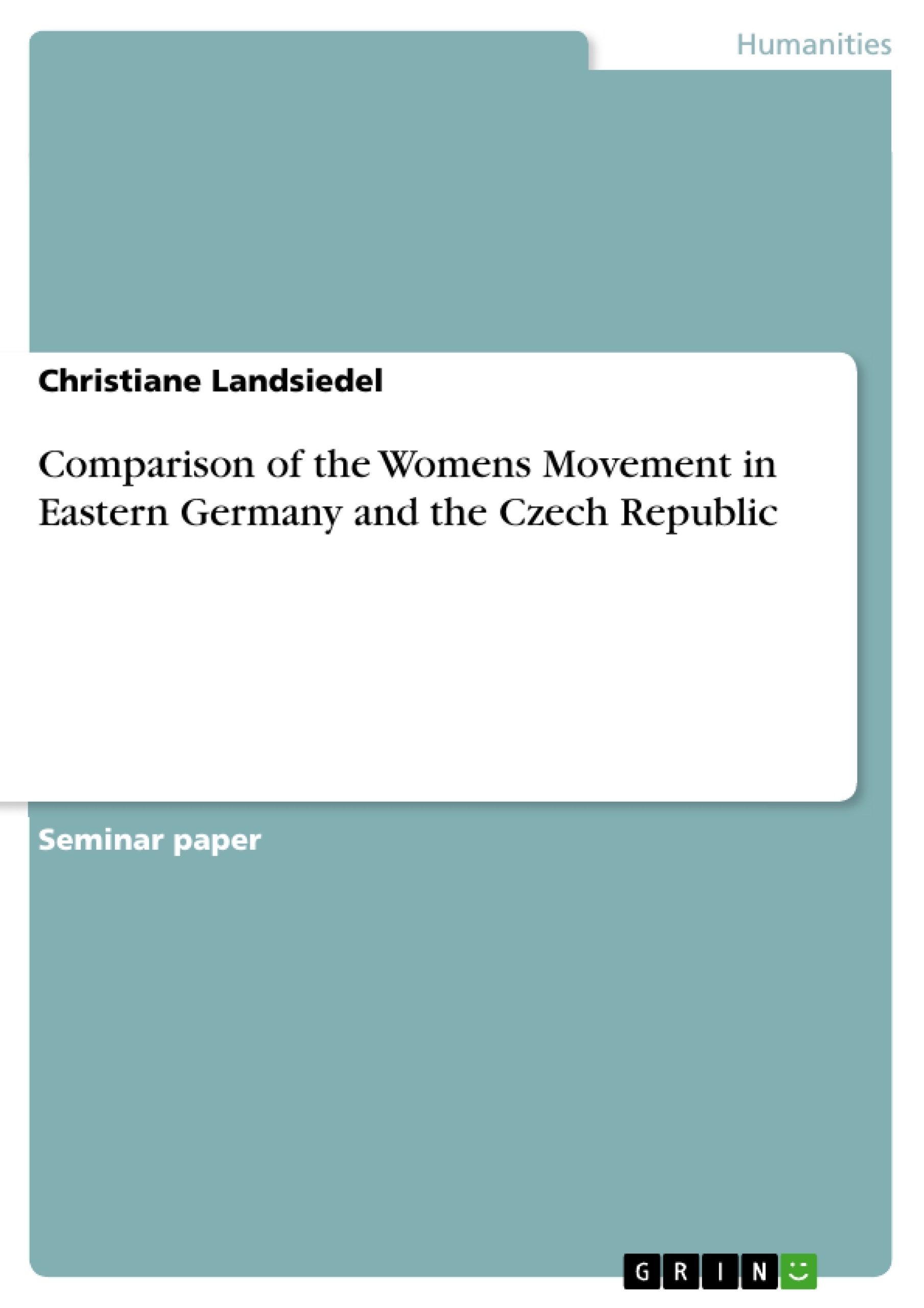As a prototypical image of social movements, we might be reminded of strong forms of protest – “we tend to associate collective mobilization with speeches, raised fists, joyous or angry voices, banners and flags flapping in the wind. We expect moving gestures”.
Assuming this perspective, there is little protest in the Czech Republic or the New Länder in Germany today. This observation applies above all to the women’s movement which is characterized by “institutionalisation without mobilization”. In both countries, the women’s movement had its peak between 1989 and approximately 1993, but seems to suffer from a “mobilization fatigue” now. So can we still speak of social movements, if there is no mobilization?
In order to answer this question we have to take a closer look at the specific characteristics of social movements. An alternative view suggests that the basic repertoire of protest has become modified in the second part of this century. In liberal democratic states the initially powerless activists are no longer confined to private or public spaces – a partial transformation and shift of collective protest has taken place.
This perspective completely reverses the picture of lethargic protest. Endeavouring to consolidate and to professionalize themselves, activists learn to use resources and modern technology to communicate with each other and the public and also how to survive in new party democracies. Among their other main activities we can find out-reach, mutual help and assistance programmes, lobbying, critical scientific reporting and, when possible, negotiations with government and politicians.
In sum, following Flam (2002), I define social movements as social agents who take advantage of and command resources in order to convey issues to the public and to influence the agenda in their polity. As far as the question of the political influence exercised by social movements is concerned, the relation between the movements and the corresponding state within whose territory they operate comes into focus. However, the question of access and political influence is related to social movements which have already gained a certain degree of public and political recognition.
Inhaltsverzeichnis (Table of Contents)
- Introduction
- 1. Theoretical Background
- 1.1 Political Opportunity Structure
- 1.2 Framing
- 2. Methodology
- 3. A Comparison of the Women's Movement in Eastern Germany and the Czech Republic
- 3.1 The Women's Movement in Eastern Germany
- 3.1.1 Testing Hypothesis: Political Opportunity Structure
- 3.1.2 Testing Hypothesis: Framing
- 3.2 The Women's Movement in the Czech Republic
- 3.2.1 Testing Hypothesis: Political Opportunity Structure
- 3.2.2 Testing Hypothesis: Framing
- 4. Conclusion
- Bibliography
Zielsetzung und Themenschwerpunkte (Objectives and Key Themes)
This paper aims to analyze the women's movements in Eastern Germany and the Czech Republic, focusing on the influence of political opportunity structures and framing on their development and manifestation. The paper investigates the specific circumstances and factors that facilitated or hindered the emergence and progress of these movements.
- Political opportunity structure and its impact on women's movements
- Framing strategies employed by women's movement activists
- Comparison of the women's movements in Eastern Germany and the Czech Republic
- The role of social movements in shaping political landscapes
- The evolution of social movements in post-communist societies
Zusammenfassung der Kapitel (Chapter Summaries)
The paper begins with an introduction that defines social movements and discusses their relevance in contemporary society. It highlights the shift in protest strategies from traditional public demonstrations to more nuanced approaches utilizing resources and modern technology. The introduction then focuses on the specific context of women's movements in Eastern Germany and the Czech Republic, highlighting the historical backdrop and contrasting the pre-1989 situations in the two countries.
Chapter 1 delves into the theoretical framework, exploring the concept of political opportunity structure and its impact on social movements. It explains how changes in the political environment can create opportunities for collective action and influence the forms and strategies of movements. The chapter also discusses the importance of framing in shaping public perceptions and mobilizing support for social causes.
Schlüsselwörter (Keywords)
The key concepts and themes explored in this paper include: political opportunity structure, framing, women's movement, Eastern Germany, Czech Republic, post-communist societies, social movements, collective action, mobilization, identity, and political influence. The paper draws upon sociological theories and analyzes the interplay of macro-level factors and individual agency in shaping social movements in the context of political transitions.
- Quote paper
- Christiane Landsiedel (Author), 2004, Comparison of the Womens Movement in Eastern Germany and the Czech Republic, Munich, GRIN Verlag, https://www.grin.com/document/31420



